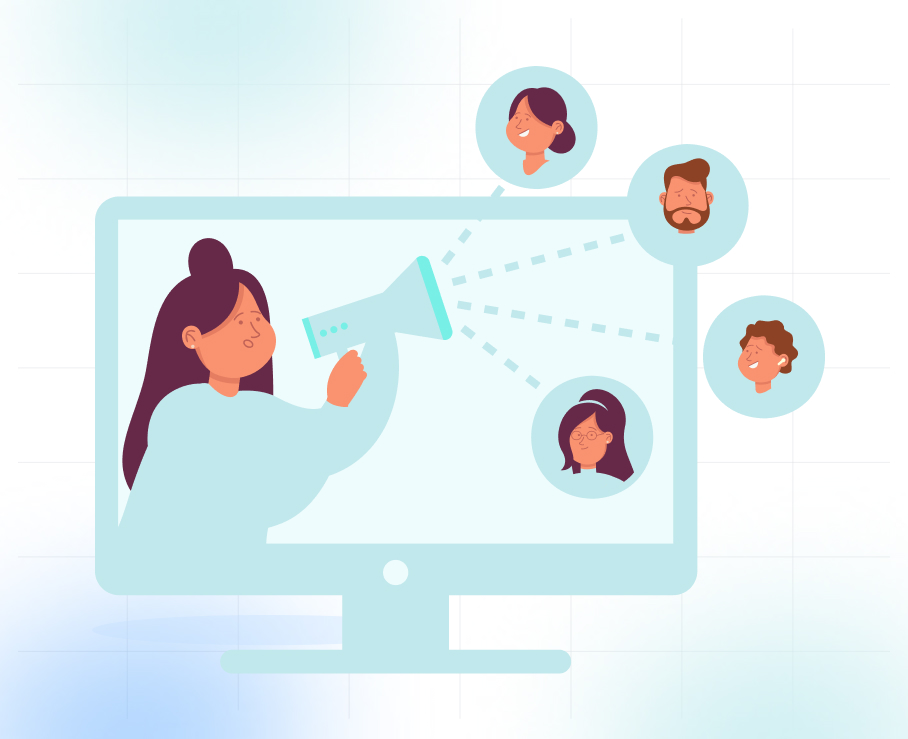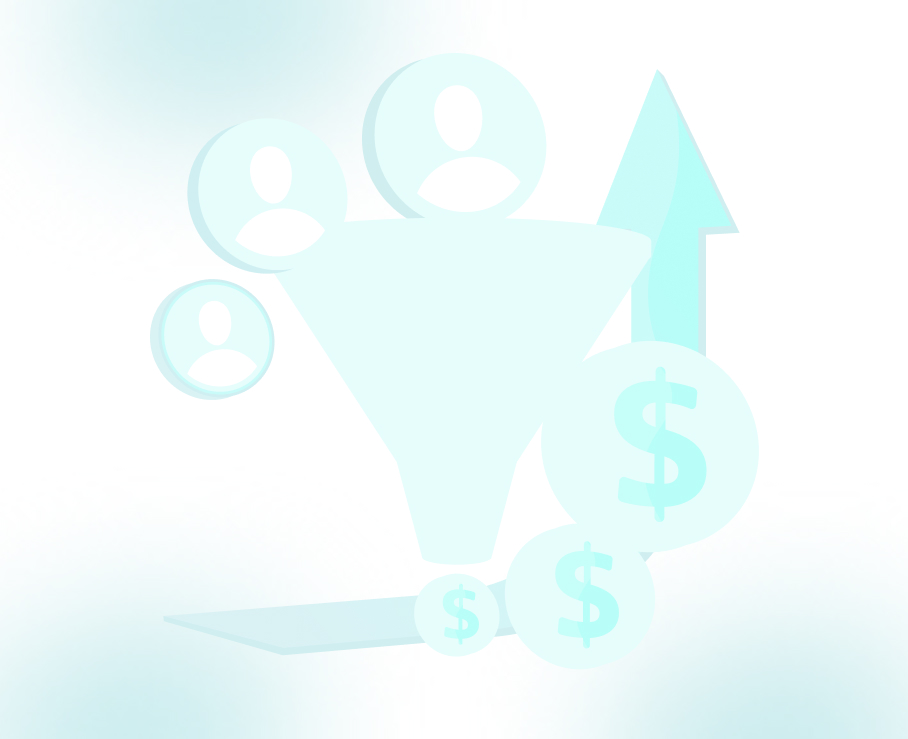
B2B Email Marketing Strategies and Best Practices

Many B2B sales teams, particularly in MSPs, technology, and manufacturing, face the same recurring challenges: low engagement, poor lead quality, and inconsistent pipeline growth. Despite consistent outreach efforts, the return often fails to justify the time and resources invested.
In most cases, the issue isn’t the channel; it’s the execution. Email remains one of the most reliable tools for B2B engagement, provided it’s used with intent, clarity, and a strong understanding of the audience. In fact, recent data shows that 73% of B2B marketing companies and agencies identify email as their most successful content distribution channel.
This blog focuses on practical, high-impact email marketing strategies that help B2B teams connect with the right decision-makers, streamline lead generation, and support sustainable MRR growth. So, let’s get started!
Why Opt for B2B Email Marketing?
For B2B teams focused on efficiency and qualified pipeline growth, email offers a direct, controlled, and cost-effective channel. It eliminates guesswork, supports consistent outreach, and delivers measurable results across every stage of the sales funnel.
- Reaches decision-makers without relying on third-party platforms
- Enables precise targeting based on role, industry, and buying stage
- Provides clear performance metrics to refine strategy in real time
- Scale outreach without additional overhead
- Matches the long, consultative sales cycles common in MSP and tech sales
- Replaces cold calling with relevant, personalized messaging that drives responses
But before you launch a campaign, it’s crucial to understand why traditional email tactics often miss the mark in B2B settings.
Also Read: A TLM Guide to Generating High-quality B2B Leads for MSPs.
Why Traditional Email Marketing Falls Short in B2B

Conventional B2C tactics cannot be applied to the B2B industry, where decisions are slower, more complex, and involve multiple stakeholders. Here’s why typical email tactics fall short:
- Complex Decision-Making: B2B buyers analyze budgets, MRR, and long-term impact; thus, the usual “Act Now” messaging often backfires.
- Multiple Stakeholders: One purchase can involve 6–10 decision-makers. Generic emails fail to address their diverse priorities.
- Longer Sales Cycles: Buying decisions take months, not minutes. Most email campaigns stop too early, missing key engagement windows.
To email campaigns that actually move the needle, you need strategies built for how B2B buyers think, decide, and act.
Recommended: Email Marketing: Key for B2B Lead Gen and Appointment Setting
Strategies for High-Impact B2B Email Campaigns

A pipeline is built by targeted, data-driven email campaigns, not by random outreach. For B2B companies in sectors such as MSPs, staffing, tech, and manufacturing, success comes from aligning every email with who the prospect is, what they care about, and where they stand in the buying process. Here's how to approach it with precision:
1. Understand the B2B Buyer
Before launching any campaign, you need to understand who you're speaking to. B2B buyers today are far more informed and cautious. They conduct their research, compare options, and evaluate long-term impact before making any commitments. Generic, one-size-fits-all content simply doesn’t work in this space. Your B2B email marketing strategy should be built around their decision-making style: thoughtful, collaborative, and value-driven.
Key Considerations:
- Buyers do their homework: Expect them to read case studies, reviews, and technical breakdowns before replying.
- Solutions over sales talk: Emails that deliver practical value, like market insights or productivity hacks, gain better traction over sales emails.
- Personalized content wins: Segment messaging by decision-maker roles (e.g., technical, financial, operational) to match their priorities.
Read: 13 Effective Email List Cleaning Strategies For Better Engagement
2. Build and Maintain a Clean, Targeted List
Even the best-crafted email won’t perform if it lands in the wrong inbox. A clean, accurate database is the backbone of successful B2B email marketing. It ensures better deliverability, higher engagement, and more relevant conversations. Instead of casting a wide net, focus on quality, build lists that reflect your ICP across MSPs, tech firms, manufacturing, and other verticals.
Partnering with a lead generation provider or using account-based marketing techniques can help refine your outreach to fit these profiles.
Strategic practices:
- Regular list cleaning: Remove unresponsive contacts, duplicates, and bounced emails monthly. A clean list protects your sender reputation, improves deliverability, and ensures your campaigns reach the right audience. TLM supports this process by helping B2B teams maintain reliable, up-to-date email lists, minus the manual effort.
- Double opt-in and permission-based adds: Protect your sender reputation and avoid spam filters.
- Target ICP filters: Prioritize decision-makers in high-fit industries to support better SQL and appointment setting outcomes.
3. Segment Based on Intent, Not Just Demographics
Segmentation is often misused in B2B email marketing. While industry, company size, and job title are important, they don’t tell the whole story. Behavioral intent truly improves campaign performance, the type of content the recipient has engaged with, which pages they’ve visited, or where they are in the sales funnel.
Using insights from your demand generation activities can help segment leads based on readiness to buy, interests, or prior engagement. This ensures each email speaks directly to their current mindset.
Ways to segment more effectively:
- Engagement-based: Trigger different follow-ups for leads who clicked vs. those who didn’t.
- Funnel stage: Deliver nurturing content to top-funnel leads, pricing info to mid-funnel, and demos or case studies to bottom-funnel prospects.
- Role-specific pain points: CFOs care about MRR, while IT heads prioritize security or scalability.
Did you know?
Segmented emails drive 30% more opens and 50% more clickthroughs than unsegmented ones
4. Craft Value-Driven Messaging That Speaks to Pain Points
B2B buyers don’t respond to flashy subject lines or pushy sales language. They’re looking for relevance and real solutions to their challenges, especially in industries like MSPs or IT services, where every decision affects long-term MRR and operational outcomes. Your emails must highlight how your solution fits into their workflow, addresses a pain point, or improves a metric that matters to them.
The goal of B2B email marketing isn’t just to get clicks, it’s to build trust by showing that you understand their business and can help solve specific issues.
Tips to craft better messages:
- Lead with pain points: Begin emails by naming the challenge your ICP is likely facing, such as slow pipelines, poor SQL quality, low ROI, etc.
- Offer actionable insights: Share industry-specific content like benchmark reports or short checklists tailored to their segment.
- Avoid fluff: Every sentence should answer “why this matters” to the reader’s role or business.
Be more specific with your outreach and drive better results—check out this Ultimate Guide to Targeted Email Marketing.
5. Design Nurturing Sequences, Not One-Off Emails
One of the biggest mistakes in B2B email marketing is treating it like a one-shot attempt. In reality, most deals take several interactions, especially in complex B2B sales with multiple stakeholders. You need nurturing sequences that guide prospects from awareness to consideration and then to decision.
A well-structured email sequence keeps leads engaged across the entire sales pipeline, gradually educating them while building credibility.
Effective nurturing structure:
- Email 1: Introduce value and demonstrate understanding of industry challenges.
- Email 2: Share relevant solutions, such as a short explainer video or case study.
- Email 3: Provide social proof, client results, G2 reviews, or measurable impact on MRR.
- Email 4: Include a soft CTA, invite them to schedule an appointment, or explore a specific service.
Tip: Every email should feel like a strategic nudge, progressively addressing the lead’s pain points, building trust, and naturally leading them toward a decision without sounding repetitive or forced.
6. Align Email Strategy with Sales and ABM Campaigns
When your email marketing operates in isolation, it creates gaps in engagement and messaging. For maximum impact, align it with broader account-based marketing efforts and sales outreach. This ensures consistency in tone, timing, and targeting across all channels, supporting deeper conversations with qualified leads. This kind of integrated approach is especially important when you're targeting enterprise MSPs or decision-makers across multiple departments.
Tactical alignments that improve performance:
- Sync email content with sales scripts: Ensure SDRs and reps reinforce the messaging shared in campaigns.
- Map touchpoints by account stage: Use ABM logic to determine which email content goes to awareness-stage accounts vs. mid-funnel ones.
- Coordinate around account signals: If a lead opens multiple emails or clicks on pricing pages, follow up with a personalized email to book an appointment.
Ready to fill your pipeline with qualified leads and reach 3x more of your ideal customers?
Schedule a meeting.
7. Track Metrics That Drive Revenue
Open rates and click-throughs are useful, but they don't tell the whole story, especially in B2B. You need to measure what truly matters: how many quality leads you’re generating, how many appointments are being set, and whether email campaigns are contributing to long-term monthly recurring revenue (MRR).
Advanced B2B email marketing strategies integrate with CRMs or real-time dashboards to provide full-funnel visibility. You should be able to trace every email touchpoint to pipeline movement or sales-qualified leads.
Metrics that matter:
- Lead-to-opportunity conversion rate: Are your emails pushing real SQLs?
- Appointment conversion rate: How many leads booked meetings after email outreach?
- MRR influenced by email campaigns: Track how nurturing contributes to revenue.
- Unsubscribe and bounce rates: High numbers here may point to poor list hygiene or misaligned messaging.
This data will help refine not just your emails, but your demand generation strategy as a whole. However, even strong email tactics can still fall short if execution is not closely monitored. Below are common mistakes that silently drain your ROI and how to address them.
Recommended: 5 Proven Strategies to Convert Cold Leads into Sales Successfully.
Common Pitfalls and Their Fixes in B2B Email Marketing

Even well-intentioned B2B email marketing campaigns can fall flat due to avoidable mistakes. These missteps reduce engagement, damage brand perception, waste lead gen efforts, and erode trust with decision-makers. Below are some of the most common pitfalls:
- Generic, Vertical-Agnostic Messaging: Sending the same email to SaaS, staffing, and MSPs alike dilutes relevance. Vague value props don’t resonate with specialized buyers.
- Pitch-First, Value-Later Approach: Cold emails that open with product pitches get deleted fast. Buyers want insights, not demos, right out of the gate.
- Neglecting Follow-Ups and Frequency: One-and-done outreach rarely works in B2B. Many marketers give up after 1–2 emails without realizing multiple touches are essential.
- Poor Email List Hygiene: Old, unengaged lists create high bounce rates, low engagement, and spam traps. Without regular cleaning, even great content gets blocked.
Here are a few strategies to fix it:

- Vertical-Specific Personalization: Tailor messaging to the industry’s context, challenges, and terminology. Segment your email list by vertical and use use-case-driven copy that speaks to their reality.
- Lead with Value, Not the Pitch: Share a relevant stat, short insight, or resource first. Position your email as helpful, not salesy. Let the value start the conversation, then gradually introduce offers later in the sequence.
- Structure a Follow-Up Cadence: Plan a 5–7 touch sequence spaced over a few weeks. Vary formats, emails, brief case studies, links to useful content, to maintain attention without spamming.
- Clean and Warm Your List: Use list cleaning tools to remove stale contacts. Suppress disengaged leads and use re-engagement campaigns before removing them entirely. Consider using verified contacts through a trusted partner to improve results from the start.
Last but not least, it is equally important to ensure that your emails reach the inbox and meet compliance standards.
Compliance and Deliverability Best Practices
Poor practices in B2B email marketing can damage your sender reputation, throttle deliverability, or even result in legal penalties. Here’s how to stay on the right side of both inboxes and regulations.
CAN-SPAM Act Compliance for B2B

Even though B2B emails don’t require prior opt-in in many regions (like the US), compliance is still essential to avoid blacklists and fines.
- Clear Sender Identification: Every email must clearly show who it’s from, including your company name, a valid email, and a physical mailing address.
- Opt-Out Mechanism: Make unsubscribing easy and immediate. Avoid hiding links or using complex forms.
- Respect Unsubscribes Promptly: Process opt-out requests within 10 business days and never contact unsubscribed leads again.
While some businesses still use opt-out models, a permission-based approach leads to better engagement and fewer complaints. TLM applies CAN-SPAM compliant practices across all campaigns to protect deliverability, maintain trust, and meet regulatory expectations.
Email Deliverability Optimization

Getting past the spam filter isn’t just about language, it also depends on technical setup, sender reputation, and consistent engagement
- Maintain List Hygiene: Regularly remove inactive, bounced, or unengaged contacts. Monitor engagement rates and clean lists every 60–90 days.
- IP Reputation Management: Sending from a dedicated IP? Monitor its sender score. Avoid spikes in volume and use consistent sending patterns to build trust with ISPs.
- Implement Authentication Protocols: These ensure your emails are legit and secure:
- SPF (Sender Policy Framework): Confirms the sender’s domain is authorized.
- DKIM (DomainKeys Identified Mail): Adds a digital signature to verify authenticity.
- DMARC (Domain-based Message Authentication): Aligns SPF and DKIM policies and helps monitor misuse.
Together, these protocols reduce spoofing risks and improve inbox placement.
Also, check Top 8 Strategies for Successful Targeted Lead Generation.
Final Thoughts
Most B2B email marketing programs underperform not due to a lack of effort but due to a lack of structure, segmentation, and follow-through. Success comes from building systems that align with how real buyers make decisions: coordinated messaging, role-based targeting, and consistent engagement across the buying cycle.
TLM (The Lead Market) supports this process through targeted lead generation, precision appointment scheduling, and sustained demand generation efforts, all integrated with account-specific email marketing.
For MSPs and other B2B service providers, that means fewer wasted conversations, stronger buyer intent, and a sales pipeline that produces measurable MRR growth, not inflated vanity metrics.
If your current campaigns aren’t converting consistently or your lead hand-offs feel disjointed, it's time to rethink how your outreach supports actual sales outcomes.
FAQ’s
1. What is B2B email marketing?
B2B email marketing uses targeted email campaigns to nurture relationships and drive sales between businesses. It delivers tailored, decision-maker-focused content, such as industry insights, product demos, or appointment invites, to influence professionals, not consumers.
2. How is B2B email marketing different from B2C?
B2B emails engage professionals through data-backed, problem-solving messages tailored to long sales cycles and multiple stakeholder decisions. In contrast, B2C emails often rely on emotional appeal, impulse, and fast discounts, because business buyers evaluate ROI and outcomes.
3. What is a good open rate for B2B email marketing?
A strong B2B open rate typically ranges from 17% to 28%. Higher performance is possible through quality targeting, personalization, and engaging subject lines, especially within professional verticals.






